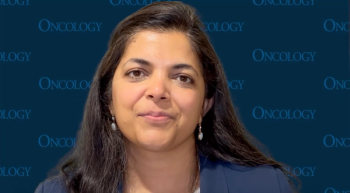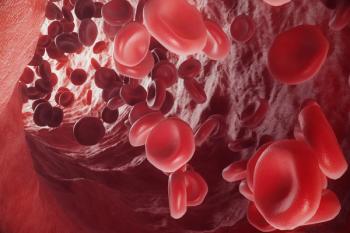
Dose-escalated BEACOPP should become new standard of care for early unfavorable Hodgkin’s lymphoma
The intensified regimen of BEACOPP plus standard therapy ABVD plus radiotherapy bested four cycles of ABVD alone, leading to a significant improvement in tumor control. Final results from the German Hodgkin Study Group trial saw a 7% improvement in terms of freedom from treatment failure between the standard and new treatment arms.
ORLANDO, FLA-Intensifying treatment for patients with early unfavorable Hodgkin’s lymphoma using an escalated regimen of BEACOPP* chemotherapy resulted in better overall tumor control, according to the final analysis of the German Hodgkin Study Group HD14 trial.
“Hodgkin’s lymphoma is a very curable disease, and we wanted to see if we could improve on our standard treatment for unfavorable early Hodgkin’s lymphoma,” said Andreas Engert, MD, chair of the German Hodgkin Study Group and a professor of medicine at the University Hospital Cologne.
The current standard consists of four cycles of chemotherapy with ABVD** followed by involved-field radiation therapy (IF-RT), a treatment in which radiation is delivered only to areas of the body affected by the lymphoma.
Dr. Rosen’s perspective:
“The majority of U.S. physicians have not embraced BEACOPP because of its toxicity profile.”
In a previous study, the German Hodgkin Study Group achieved a five-year overall survival of 91% and freedom from treatment failure was 83% in this group of patients in a prior study by the researchers (European Hematology Association 2009 abstract 0533).
The new study randomized 1,623 patients with histologically confirmed Hodgkin’s lymphoma in early unfavorable stages to receive either four cycles of ABVD (n = 818) or two cycles of BEACOPP-escalated followed by two cycles of ABVD (n = 805). All patients then received 30-Gy IF-RT, postchemotherapy. Patient demographics were similar in both arms of the trial, with a median age of 34 years and most patients (67%) with stage IIA disease.
The investigators found the overall response rate to treatment was 95% in each arm. There were 20 deaths in each arm with a median follow-up of 42.4 months. In the first arm, 19 patients had secondary neoplasia compared with 16 patients in the second arm.
In the intent-to-treat analysis, 23 of 765 patients in the standard treatment group (3%) showed disease progression compared with six of 763 (0.8%) patients in the BEACOPP-escalated group. Early relapse rates were 3% in the standard treatment group vs 0.9% in the BEACOPP group. Late relapse rates were 2.4% in the standard group vs 0.8% in the BEACOPP group (
The estimated five-year rate for freedom from treatment failure was 87.6% (95% confidence interval [CI] 84.8% to 90.4%) in the standard group, and 94.3% (95% CI 92.5% to 96.1%) in the BEACOPP group, ( P < .0001), for a 6.7% difference between the two groups (95% CI 3.4% to 10.0%).
There was no significant difference seen in overall survival as yet, Dr. Engert said. “The follow-up is still very short. We know that with longer follow-up the differences will increase. So there is a 7% difference between the groups in terms of freedom from treatment failure right now, and if we wait longer, this gap will get broader and broader,” he told Oncology NEWS International. “Also, we expect to see an overall survival difference as we continue to follow these patients.”
*BEACOPP = Cyclophosphamide, doxorubicin, etoposide, procarbazine, prednisone, bleomycin, and vincristine
**ABVD = adriamycin, bleomycin, vinblastine, and dacarbazine
Related Reading
Newsletter
Stay up to date on recent advances in the multidisciplinary approach to cancer.
















































































